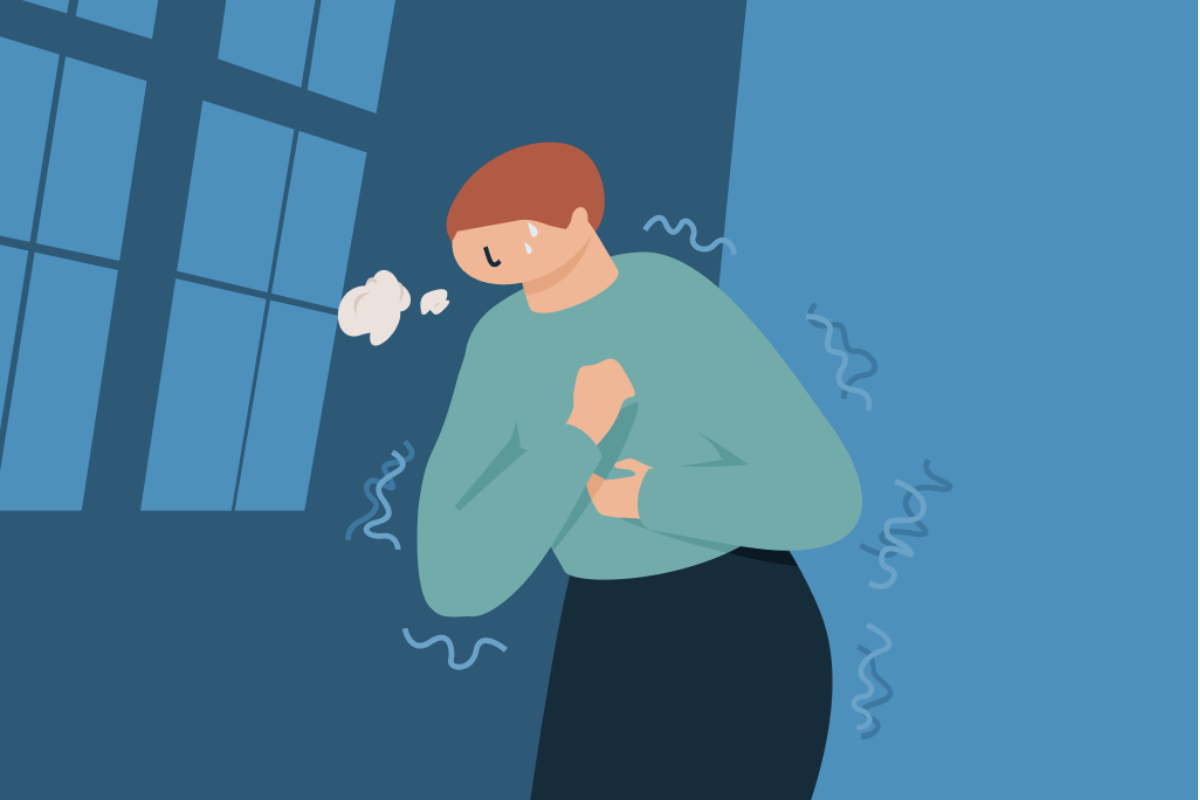Imagine your heart suddenly racing, your breathing becoming shallow and rapid, and an overwhelming sense of impending doom washing over you—all while sitting peacefully on your couch watching television. This is the bewildering reality of panic attacks, a phenomenon that affects millions of people worldwide and demonstrates just how powerful the connection between mind and body truly is.
Panic attacks represent one of the most misunderstood aspects of mental health, often dismissed as “just anxiety” or something people should simply “get over.” However, the science reveals a far more complex picture. These intense episodes are rooted in sophisticated neurological processes that involve multiple brain regions, chemical messengers, and evolutionary survival mechanisms that have gone awry.
A panic attack occurs when your body’s natural “fight-or-flight” response is triggered inappropriately, flooding your system with stress hormones and preparing you for danger that doesn’t exist. During these episodes, adrenaline levels can spike by 2.5 times or more, creating very real physical symptoms that can be so severe that many people mistake them for heart attacks or other life-threatening conditions.
The prevalence of panic attacks is staggering—up to 11% of people in the United States experience a panic attack each year, with approximately 2-3% developing panic disorder, a condition characterized by recurring, unexpected attacks. Women are twice as likely as men to develop panic disorder, highlighting the complex interplay of biological, psychological, and social factors involved.
Understanding the science behind panic attacks isn’t just academic curiosity—it’s essential for reducing stigma, improving treatment approaches, and helping those affected realize that their experiences are valid, treatable, and rooted in measurable biological processes.
The Brain’s Fear Network: Key Players in Panic

The Amygdala: Your Overactive Security System
At the center of panic attacks lies the amygdala, an almond-shaped structure deep within the brain that serves as your personal security system. This region processes fear and other emotions, constantly scanning for potential threats in your environment. During a panic attack, the amygdala becomes hyperactive, setting off alarm bells throughout your nervous system even when no real danger exists.
Research has shown that individuals with panic disorder often have an overactive amygdala that responds more intensely to potential threats than those without the disorder. It’s as if their brain’s alarm system is permanently set to “ultra-sensitive” mode, ready to trigger a full-scale emergency response at the slightest provocation. This dysfunction of the amygdala may be at the root of panic disorders, according to researchers.
The Hippocampus: Memory’s Role in Fear
The hippocampus, your brain’s memory center, plays a crucial supporting role in panic attacks by retrieving anxiety-provoking memories and experiences. During an attack, this seahorse-shaped structure frantically searches through its catalog of memories, pulling up every scary or uncomfortable experience it can find. This flood of negative memories can intensify the panic attack, creating a vicious cycle of fear and distress.
The hippocampus also explains why people with panic disorder often develop fears of specific places or situations associated with previous attacks. It essentially bookmarks these experiences as “dangerous,” making future panic attacks more likely to occur in similar contexts.
Emerging Research: The Insular Cortex and Brain Stem
Recent research has identified additional brain regions involved in panic attacks, including the insular cortex and the nucleus of the solitary tract in the brain stem. These areas work together to receive and process signals from the heart, lungs, and bloodstream. Remarkably, studies have found that these regions can generate fear impulses even in people missing an amygdala due to brain injury, suggesting they may be primary initiators of panic in many cases.
The Fight-or-Flight Response Gone Wrong
Understanding Your Body’s Emergency System
The fight-or-flight response is an evolutionary marvel designed to keep you alive in dangerous situations. When faced with immediate danger, your brain orders the autonomic nervous system to activate this response, flooding your body with chemicals like adrenaline. Your heart rate and breathing accelerate, blood flows to your muscles, and your senses sharpen—all preparing you for physical combat or rapid escape.
When the System Misfires
A panic attack occurs when this sophisticated survival mechanism is triggered inappropriately, without any actual danger present. Your body experiences all the physiological changes of a genuine emergency response, but you might be in completely harmless situations—watching television, sleeping, or sitting in a meeting.
The physical symptoms during a panic attack are intense and very real, including racing heart rate, shortness of breath, sweating, trembling, chest pain, nausea, dizziness, and feelings of unreality or detachment. These symptoms typically peak within minutes and can last anywhere from 5 to 20 minutes, though some people report attacks lasting up to an hour.
Chemical Messengers and Brain Imbalances

The Role of Neurotransmitters
Scientists believe that chemical imbalances in the brain contribute significantly to panic attacks. Key neurotransmitters involved include:
GABA (gamma-aminobutyric acid): This neurotransmitter helps calm the nervous system. Imbalances in GABA may contribute to increased anxiety and panic.
Serotonin: Often called the “happiness chemical,” serotonin affects mood regulation. Imbalances in serotonin levels may be linked to panic disorder.
Cortisol: Known as the stress hormone, elevated cortisol levels can prime the body for panic attacks.
The Adrenaline Surge
During a panic attack, adrenaline floods into your bloodstream, putting your entire body on high alert. This hormone surge quickens your heartbeat, sends more blood to your muscles, makes your breathing fast and shallow, spikes your blood sugar, and sharpens your senses—all happening in an instant.
Triggers and Risk Factors
Common Panic Attack Triggers
While panic attacks can seem to come from nowhere, many have identifiable triggers:
Situational triggers include crowded places, social situations, or environments where escape feels difficult.
Emotional triggers encompass stressful life events, relationship conflicts, or overwhelming emotions.
Physical triggers involve illness, fatigue, intense exercise, or physical sensations that mimic panic symptoms.
Substance-related triggers include stimulants like caffeine, withdrawal from medications, or use of illicit drugs.
Risk Factors for Developing Panic Disorder
Several factors increase the likelihood of developing panic disorder:
-
Significant life stress (financial problems, serious illness in family, domestic abuse)
-
History of childhood physical or sexual abuse
-
Traumatic events (accidents, violence, disasters)
-
Family history of panic attacks or panic disorder
-
Certain medical conditions like mitral valve prolapse, hyperthyroidism, or hypoglycemia
The Timeline of a Panic Attack
Research reveals that panic attacks may not be as sudden as they appear. Physical changes can begin up to an hour before an attack becomes noticeable. Studies using devices that track heart activity, sweating, and breathing found lower-than-normal carbon dioxide levels—indicating rapid, deep breathing—as early as 45 minutes before a panic attack.
The attack itself typically peaks within 10 minutes and subsides within 10-15 minutes, though the fear and exhaustion can linger much longer. Understanding this timeline can help people recognize early warning signs and implement coping strategies before symptoms become overwhelming.
Treatment and Management Strategies

Evidence-Based Treatments
Panic disorder is highly treatable, with several effective approaches:
Cognitive Behavioral Therapy (CBT): This therapy helps identify and change harmful thought patterns while developing coping strategies.
Medications: SSRIs and SNRIs are commonly prescribed, along with anti-anxiety medications when appropriate.
Panic-focused psychodynamic therapy: This specialized approach addresses childhood trauma that may contribute to panic attacks.
Immediate Coping Techniques
When experiencing a panic attack, several strategies can help:
-
Focus on controlled breathing: inhale through your nose for 4 seconds, hold for 2 seconds, exhale through your mouth for 6 seconds.
-
Find a comfortable place to sit.
-
Remind yourself that you’re not in danger and the attack will pass.
-
Ground yourself by focusing on your immediate surroundings.

